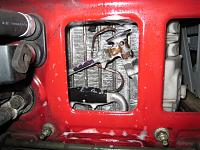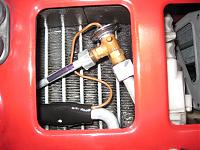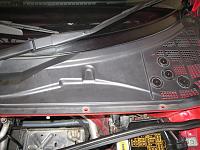

Just quick clean on the evaporator and made another filter.

The filer goes under the plastic panel below the wiper arm under the bonnet.
If you are going to carry out this process, it would be best to get hold of some of the spare plastic clips holding the rubber weatherstrip under the bonnet as it is so easy to break them after long years.
8. Driver seat slide motor
I started to notice that when it was very cold in the morning, the fore/aft sliding motor/gear of driver seat made strange noise. It sounded like struggling to slide. When itís warm, no problem at all. So, removed the driver seat and took it outside of the cabin. Re-greased the spiral guide and the seat rail and the noise disappeared.
I was also working on another NSX recently so I'll post the detail soon.
Kaz







 Reply With Quote
Reply With Quote


